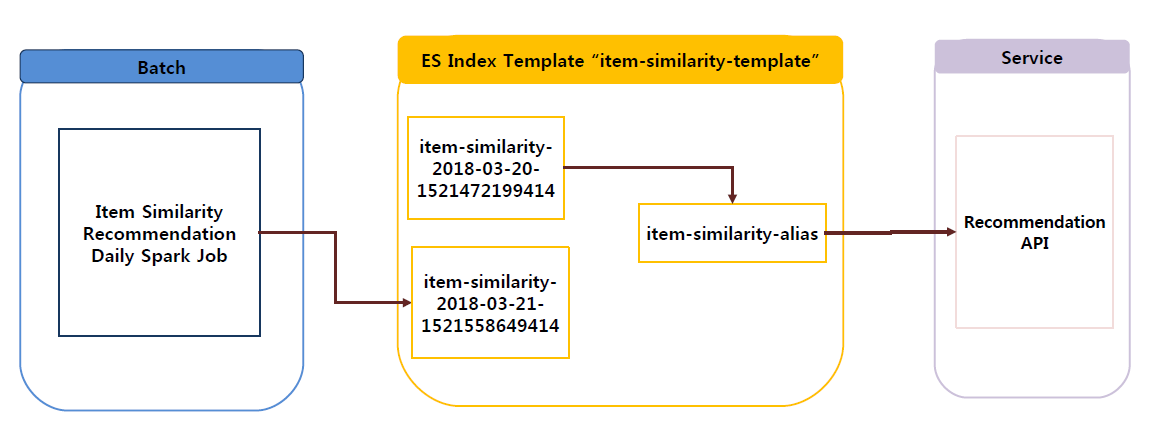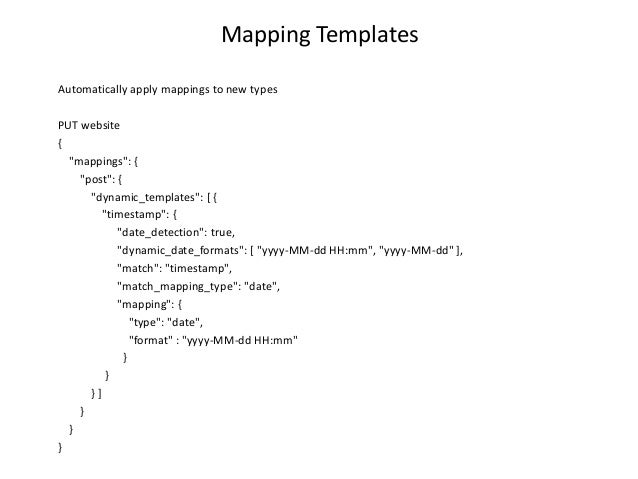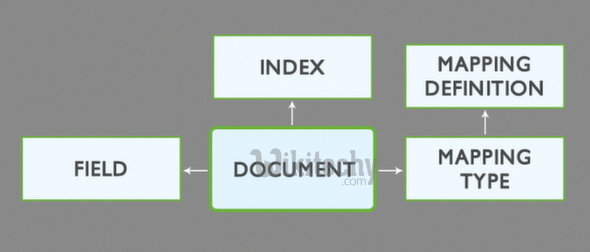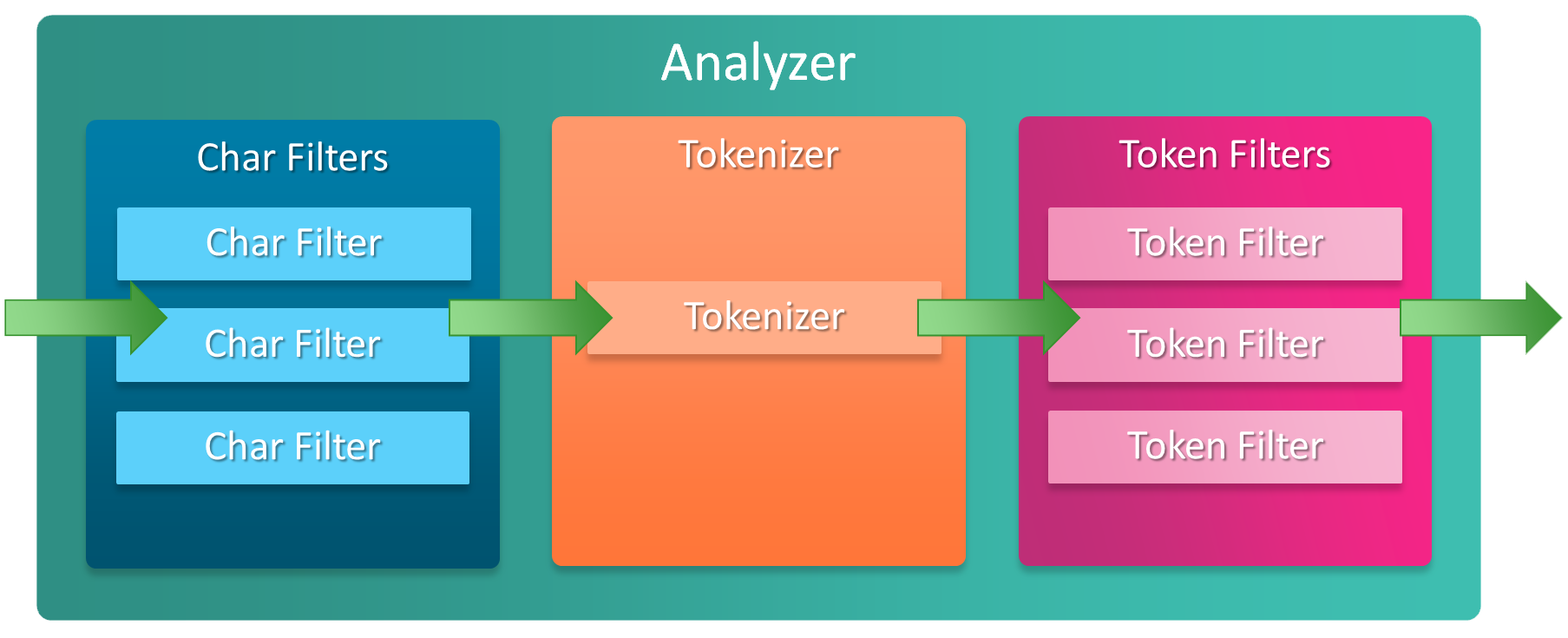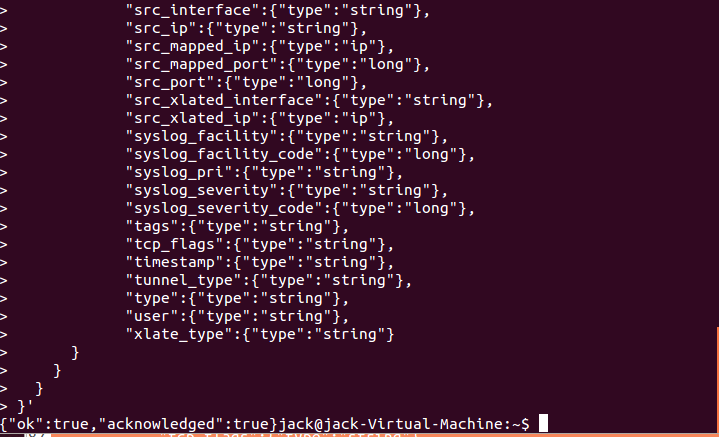Elasticsearch Mapping Template

Index templates are only applied during index creation.
Elasticsearch mapping template. Logstashoutputselasticsearch using mapping template from pathnil that is telling you that you did not provide the template configuration option on your elasticsearch output so it is using the compiled in default. How to use logstash together with elasticsearch to create custom mapping templates. If possible it will try to coerce cast the data from one type to another int to string etc. Types are deprecated in apis in 70 with breaking changes to the index creation put mapping get mapping put template get template and get field mappings apis.
Settings and mappings specified in create index api requests override any settings or mappings specified in an index template. Improve your elasticsearch storage and performance. You know more about your data than elasticsearch can guess so while dynamic mapping can be useful to get started at some point you will want to specify your own explicit mappings. Check the value of the indexmappingcoerce parameter and any messages in the elasticsearch logs.
Whereas the above recipe defines default mappings for attributes in a single index the index you are creating what if you want to tell elasticsearch that your want all indices created whose names match some rule like custom index to have such and such mappings for their attributes. Indices created in elasticsearch 700 or later no longer accept a default mapping. The dynamic mapping rules can be configured to customise the mapping that is used for new fields. When elasticsearch encounters an unknown field in a document it uses dynamic mapping to determine the data type of the field and automatically adds the new field to the type mapping.
Elasticsearch applies templates to new indices based on an index pattern that matches the index name. Changes to index templates do not affect existing indices. This allows for dynamic templates to be reordered or deleted after they were initially added. The following put request applies the same dynamic template as was seen.
Using logstash to help create an elasticsearch mapping template elastic blog. However there will be cases when this will not be your preferred option. When putting new dynamic templates through the put mapping api all existing templates are overwritten. Templates are processed in order the first matching template wins.
It is a non issue. Elasticsearch will even try string to int which will work for 20 but not hello.




